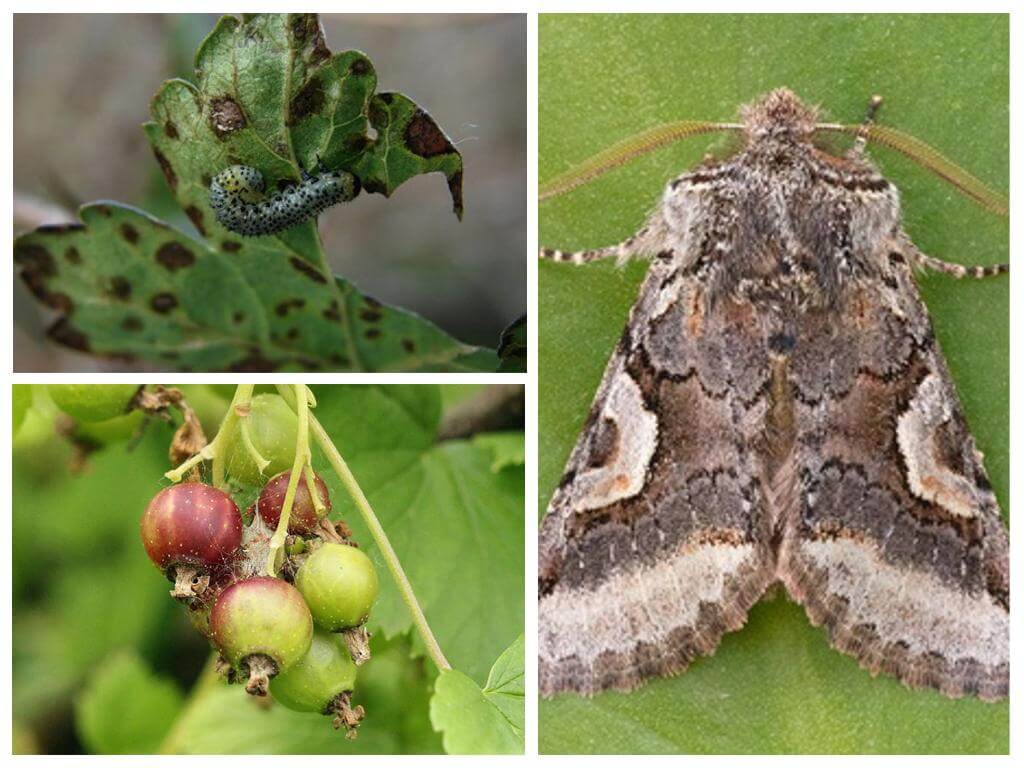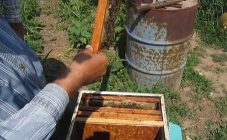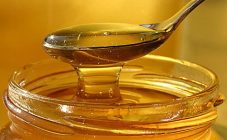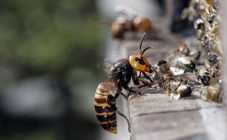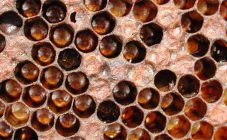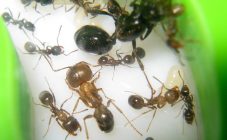Content:
Sooner or later, any beekeeper is faced with such a misfortune in the hive as infection with parasitic mites. Until recently, there were no means capable of effectively overcoming the disease. Acaricides are now the most effective means of solving the problem. Beekeepers most often use an effective ant for bees.
Ant for bees
The component is produced in a gel-like form, the active component of the product is formic acid, which has a sharp characteristic aroma.
Instructions
A healing ant for bees, instructions for use will be given below. It has an acute acaricidal effect against adult ticks called Varroa jacobsoni and Acarapis woodi. An effective drug is considered completely natural, safe for the life of bees - the products of its decay accumulate in water and carbon dioxide, and do not affect the quality of beekeeping products. If an ant was used during the processing of the hive, the quality of the produced honey and propolis does not suffer at this moment.
Indications for use
Treatment of bees with formic acid is recommended in the presence of varroatosis and acaracidosis in insects. It is on these types of mites that the active component of the agent acts. Effective formic acid, the use of which in beekeeping is recommended not only for medicinal purposes, but also for prevention purposes, allows you to avoid the spread of dangerous insects in the hive:
- Wax moth;
- Nosema intestinal pest;
- Fireflies;
- Insects that provoke rotten diseases.
There were no special harmful effects during the treatment of families with the drug "Muravyinka".
Ways of using the drug
How to save bees from the dangerous infestation of varratosis with the help of formic acid? For this purpose, the gel-like sachets are taken out of the packages and laid out in the hive, the product is placed over the webs of the frame bars.
Preventive treatment of families with a sparing agent is carried out at a frequency of 2 times a year. During the spring awakening period, beekeepers carefully examine the bee colonies, after which it is necessary to process them for disinfection of the hive with an ant. If acaricidosis progresses in the bee colony, three treatments of the hive are performed. If there is an outbreak of varratosis, then disinfection is performed twice a day. There is a break of a day or two between procedures.
Treatment of bees with formic acid
Scientists have experimentally found that worker bees use effective formic acid to disinfect their own home. Various types of formic acid are produced on an industrial scale, all of them are presented for sale in pharmacies.
To obtain the highest results, a class A ant preparation of a high quality sample is used.In addition to the common varroa mites, the remedy has a positive effect against common diseases: foulbrood, ascopherosis, wax moth, and many other parasites.
To achieve the best result during the spring awakening period, disinfectant treatments are carried out twice. During this period, the effective preparation "Pchelka" is also used to awaken bees after the spring flight. Re-processing is carried out once before wintering.
The use of oxalic acid in beekeeping
Seasonal treatment of bees with oxalic acid is a safe procedure that relieves bee colonies of the harmful varroa mites. After processing, bee products retain their beneficial properties; such measures for the treatment and prevention of the hive do not have a negative effect. Honey products after the performed actions with insects are suitable for consumption.
Experienced beekeepers often opt for oxalic acid treatment for bees due to its following benefits:
- Increased processing speed;
- Reduced labor intensity;
- The speed of action.
After the performed actions, the ticks are destroyed in 10-12 days. The efficiency of using the method is 80-93%. Bee colonies can be treated with sorrel spraying or steam treatment.
Treatment of bees with lactic acid in autumn
Lactic acid is a colorless, yellowish acid with a sour taste and characteristic odor. For the purpose of treatment, lactic acid with a concentration of 10% is selected, a ready-made aqueous solution. The effectiveness of such manipulations is 80%, almost all ticks die after careful study of infected colonies. To prepare an aqueous solution, water cooled to 35 degrees is used. Beekeepers use a fine spray for spraying. For this, frames with the produced honey and bee bread are removed in advance. During spraying, the frames with the bees are taken out in turn, and the spray is directed directly at the bees. The distance between the aerosol torch and the bee should be at least 40 cm. The comfortable air temperature for treating bees is +14 degrees. A suitable period when, for preventive purposes, it is necessary to process frames with bees is spring or autumn. During the spring awakening period, bees are treated with lactic acid with a break of 10 days. After pumping out the honey and before the formation of the bee club, processing actions are also carried out, it is better to do this from September 1 to 15. Honey obtained from families, which has undergone stage-by-stage processing, is used in food everywhere.
Using this application guide, any beekeeper can protect bee colonies from dangerous infestation of various kinds of mites.

